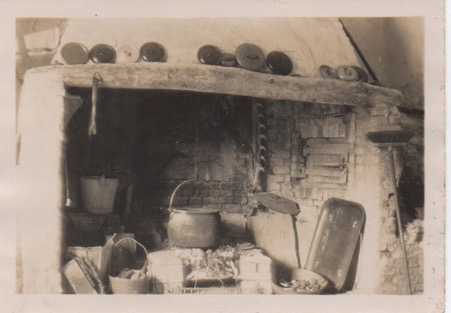Looking in our newspaper archive the other day I came across an article about Mr Thomas Charles Pigg of Gentleman’s Farm. Published in the Saffron Walden Weekly News of May 28 1926 was Mr Pigg’s obituary which I thought might be of interest. Gents or Gentleman’s Farm was the old name of Broad Green Farm and according to this newspaper report the tenancy of this farm had been in the Pigg family for “at least a couple of hundred years”. The farm was still known as Gentleman’s in 1926 but by 1964 it had changed to Broad Green Farm. Who was the ‘gentleman’? I would love to know!
Thomas Charles Pigg, probably known as Charles for that’s how he listed himself on the census, was a choir member at the church for over 50 years, and held the post of churchwarden “for a period of 25 successive years and at other times”.
The obituary goes on to report:
“Mr Pigg was a man of extraordinary kindness; “he thought evil of no man” says one who knew him best, and was ever ready to serve the church. In earlier days he was a cricketer of local reputation throughout Herts, Cambs and Essex and had played at Lord’s and Kennington Oval. A recent letter from Lord Braybrooke says: “It must be 50 years ago since you and I played cricket together in the Rectory Meadow, and I well remember your bowling”.
Educated at Newport Grammar School, he soon developed marked ability in all the school games. Later he became captain of his village team, and for 25 years was much sought after by other teams in his own and neighbouring counties. It is regretted that no complete record exists of his many centuries made at cricket or of his surprising bowling feats. All who knew him agree that he was a wonderfully good captain and a sportsman who gained the respect of players of both sides. Unremitting in his efforts to prepare a perfect wicket, his success was remarkable; a perfect turf was a joy to him, and his tennis parties on his own wonderful lawn will be remembered by many for long. Generous to a fault, foremost in all parish matters, his happy, genial disposition endeared him to all. No one who applied to him for help was turned away if he could possibly assist them. His hospitality and the produce of a wonderful garden were freely given to neighbours, and sick and poor alike. He was one of the real old type of sporting yeoman farmers. Those who knew him best esteemed him most.”
Mr Pigg was 73 when he died and is buried at Chrishall Church. It seems that the newspaper report may have been a little conservative on how long the Pigg family had farmed Gents Farm however. I also found this report from The Chelmsford Chronicle on 28 July 1882:
“Chrishall – Fire. A fire which might have proved of a most destructive character broke out on Friday at Chrishall. About twelve ‘o’ clock a woman named Rogers discovered that a stack of clover hay standing near her house was on fire. She at once gave the alarm, and Mr Charles Pigg hastened to the spot. Seeing that several cottages were in danger, he dispatched a man to Saffron Walden for the fire engine. Messrs. W. Canning, Crissell, Whitehead, and James, members of the fire brigade, proceeded to the spot on the engine, and Messrs. W. Bell and A. Cowell drove there as soon as possible. The brigade at once commenced throwing water on the cottages, and then turned their attention to the stack, which however was almost totally destroyed. It was valued at about £130. Mr Pigg informs us that for the last 372 years, during which time the farm has been in the possession of his family, no fire had occurred upon it until this one broke out. The stack was insured.”
At the time of the fire Charles was already working on the farm but his father Thomas Pigg was running it. According to the 1881 census they had 277 acres and employed 5 men and 1 boy. The Rogers family lived next door so it was probably Sarah that raised the alarm that day. And don’t forget that sending for the fire brigade and them attending would all have been done by horse. It was no wonder they lost the stack really. Saffron Walden Volunteer Fire Brigade was only formed in 1865 so less than 20 years before this fire. There is an interesting article about early fire fighting on Saffron Walden Museum’s website: https://saffronwaldenmuseum.swmuseumsoc.org.uk/introduction-to-early-fire-fighting/ £130 in 1882 would be worth over £20,000 today so it must have been a large stack and it may have been just the heat in the stacked clover that caused it to catch fire. It was a good job it was insured!

[The picture above shows Mr Reg Chambers (pitching hay) who took over farming Gentleman’s Farm after Charles Pigg. The small boy is James Cranwell but I don’t know the name of the other man on the cart.]
Gentleman’s Farm was part of the Lofts Hall Estate and when it was sold in 1926 it is still described as having “a tennis lawn, shaded by ornamental trees”. Charles Pigg was living in Orwell by then but it sounds like his tennis lawn was still in use.


0 Comments